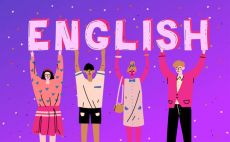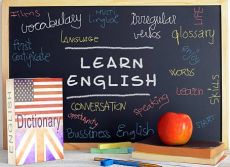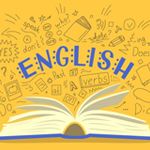800 câu trắc nghiệm Điền từ Tiếng Anh có đáp án cực hay
Chọn hình thức trắc nghiệm (20 câu/60 phút)
Chọn phần
-
Câu 1:
(1) ...............
Voluntary work helps foster independence and imparts the ability to deal with different situations, often simulaneously, thus teaching people how to (1)____ their way through different systems. It therefore brings people into touch with the real worls; and, hence, equips them for the future. Initially, young adults in their late teens might not seem to have the expertise or knowledge to impart to others that say a teacher or an agriculturalist or a nurse would have, (2)____ they do have many skills that can help others. And in the absence of any particular talent, their energy and enthusiasm can be harnessed for the benefit (3) ____ their fellow human beings, and ultimately themselves. From all this, the gain to any community no matter how many voluntees are involved is (4)_____ Employers will generally look favorably on people (5)_____ have shown an ability to work as part of a team. It demonstrates a willingness to learn and an independent spirit, which would be desirable qualities in any employee.
A. take
B. work
C. put
D. give
-
Câu 2:
(2) .................
Voluntary work helps foster independence and imparts the ability to deal with different situations, often simulaneously, thus teaching people how to (1)____ their way through different systems. It therefore brings people into touch with the real worls; and, hence, equips them for the future. Initially, young adults in their late teens might not seem to have the expertise or knowledge to impart to others that say a teacher or an agriculturalist or a nurse would have, (2)____ they do have many skills that can help others. And in the absence of any particular talent, their energy and enthusiasm can be harnessed for the benefit (3) ____ their fellow human beings, and ultimately themselves. From all this, the gain to any community no matter how many voluntees are involved is (4)_____ Employers will generally look favorably on people (5)_____ have shown an ability to work as part of a team. It demonstrates a willingness to learn and an independent spirit, which would be desirable qualities in any employee.
A. but
B. so
C. or
D. for
-
Câu 3:
(3) ................
Voluntary work helps foster independence and imparts the ability to deal with different situations, often simulaneously, thus teaching people how to (1)____ their way through different systems. It therefore brings people into touch with the real worls; and, hence, equips them for the future. Initially, young adults in their late teens might not seem to have the expertise or knowledge to impart to others that say a teacher or an agriculturalist or a nurse would have, (2)____ they do have many skills that can help others. And in the absence of any particular talent, their energy and enthusiasm can be harnessed for the benefit (3) ____ their fellow human beings, and ultimately themselves. From all this, the gain to any community no matter how many voluntees are involved is (4)_____ Employers will generally look favorably on people (5)_____ have shown an ability to work as part of a team. It demonstrates a willingness to learn and an independent spirit, which would be desirable qualities in any employee.
A. under
B. of
C. on
D. out
-
Câu 4:
(4) ...............
Voluntary work helps foster independence and imparts the ability to deal with different situations, often simulaneously, thus teaching people how to (1)____ their way through different systems. It therefore brings people into touch with the real worls; and, hence, equips them for the future. Initially, young adults in their late teens might not seem to have the expertise or knowledge to impart to others that say a teacher or an agriculturalist or a nurse would have, (2)____ they do have many skills that can help others. And in the absence of any particular talent, their energy and enthusiasm can be harnessed for the benefit (3) ____ their fellow human beings, and ultimately themselves. From all this, the gain to any community no matter how many voluntees are involved is (4)_____ Employers will generally look favorably on people (5)_____ have shown an ability to work as part of a team. It demonstrates a willingness to learn and an independent spirit, which would be desirable qualities in any employee.
A. impassable
B. unattainable
C. undetectable
D. immeasurable
-
Câu 5:
(5) ..............
Voluntary work helps foster independence and imparts the ability to deal with different situations, often simulaneously, thus teaching people how to (1)____ their way through different systems. It therefore brings people into touch with the real worls; and, hence, equips them for the future. Initially, young adults in their late teens might not seem to have the expertise or knowledge to impart to others that say a teacher or an agriculturalist or a nurse would have, (2)____ they do have many skills that can help others. And in the absence of any particular talent, their energy and enthusiasm can be harnessed for the benefit (3) ____ their fellow human beings, and ultimately themselves. From all this, the gain to any community no matter how many voluntees are involved is (4)_____ Employers will generally look favorably on people (5)_____ have shown an ability to work as part of a team. It demonstrates a willingness to learn and an independent spirit, which would be desirable qualities in any employee.
A. which
B. what
C. whose
D. who
-
Câu 6:
(1) ...........
PUBLIC EDUCATION IN THE UNITED STATES
Public Education in the United States, programs of instruction (1) _______ to children, adolescents, and adults in the United States through schools and colleges (2) _______ by state and local governments. (3) _______ the nationally regulated and financed education (4) _______ of many other industrialized societies, American public education is (5) _______ the responsibility of the states and individual school districts.
A. offered
B. sorted
C. sent
D. gave
-
Câu 7:
(2) .............
PUBLIC EDUCATION IN THE UNITED STATES
Public Education in the United States, programs of instruction (1) _______ to children, adolescents, and adults in the United States through schools and colleges (2) _______ by state and local governments. (3) _______ the nationally regulated and financed education (4) _______ of many other industrialized societies, American public education is (5) _______ the responsibility of the states and individual school districts.
A. bought
B. built
C. constructed
D. operated
-
Câu 8:
(3) ...............
PUBLIC EDUCATION IN THE UNITED STATES
Public Education in the United States, programs of instruction (1) _______ to children, adolescents, and adults in the United States through schools and colleges (2) _______ by state and local governments. (3) _______ the nationally regulated and financed education (4) _______ of many other industrialized societies, American public education is (5) _______ the responsibility of the states and individual school districts.
A. Dislike
B. Unlike
C. Contrary
D. Opposite
-
Câu 9:
(4) ..............
PUBLIC EDUCATION IN THE UNITED STATES
Public Education in the United States, programs of instruction (1) _______ to children, adolescents, and adults in the United States through schools and colleges (2) _______ by state and local governments. (3) _______ the nationally regulated and financed education (4) _______ of many other industrialized societies, American public education is (5) _______ the responsibility of the states and individual school districts.
A. networks
B. schools
C. systems
D. webs
-
Câu 10:
(5) .................
PUBLIC EDUCATION IN THE UNITED STATES
Public Education in the United States, programs of instruction (1) _______ to children, adolescents, and adults in the United States through schools and colleges (2) _______ by state and local governments. (3) _______ the nationally regulated and financed education (4) _______ of many other industrialized societies, American public education is (5) _______ the responsibility of the states and individual school districts.
A. primarily
B. only
C. shortly
D. totally
-
Câu 11:
(1) .............
In addition to the challenge to be excellent, American schools have been facing novel problems. They must (1)________with an influx of immigrant children, many of whom speak little or no English. They must respond to demands that the curriculum reflect the various cultures of all children. Schools must make sure that students develop (2)________skills for the job market, and they must consider the needs of nontraditional students, such as teenage mothers. Schools are addressing these problems in ways that reflect the diversity of the US educational system. They are opening (3)________the traditional European-centered curriculum to embrace material from American, Asian, and other cultures. Schools are also teaching cognitive skills to the nearly 40 percent of American students who do not go on to higher education. In the (4)________of a recent report by the Commission on Achieving Necessary Skills, “A strong back, the willingness to work, and a high school diploma were once all that was necessary to (5)________a start in America.”
A. do
B. stay
C. fight
D. cope
-
Câu 12:
(2) ..........
In addition to the challenge to be excellent, American schools have been facing novel problems. They must (1)________with an influx of immigrant children, many of whom speak little or no English. They must respond to demands that the curriculum reflect the various cultures of all children. Schools must make sure that students develop (2)________skills for the job market, and they must consider the needs of nontraditional students, such as teenage mothers. Schools are addressing these problems in ways that reflect the diversity of the US educational system. They are opening (3)________the traditional European-centered curriculum to embrace material from American, Asian, and other cultures. Schools are also teaching cognitive skills to the nearly 40 percent of American students who do not go on to higher education. In the (4)________of a recent report by the Commission on Achieving Necessary Skills, “A strong back, the willingness to work, and a high school diploma were once all that was necessary to (5)________a start in America.”
A. base
B. basis
C. basic
D. basics
-
Câu 13:
(3) ...............
In addition to the challenge to be excellent, American schools have been facing novel problems. They must (1)________with an influx of immigrant children, many of whom speak little or no English. They must respond to demands that the curriculum reflect the various cultures of all children. Schools must make sure that students develop (2)________skills for the job market, and they must consider the needs of nontraditional students, such as teenage mothers. Schools are addressing these problems in ways that reflect the diversity of the US educational system. They are opening (3)________the traditional European-centered curriculum to embrace material from American, Asian, and other cultures. Schools are also teaching cognitive skills to the nearly 40 percent of American students who do not go on to higher education. In the (4)________of a recent report by the Commission on Achieving Necessary Skills, “A strong back, the willingness to work, and a high school diploma were once all that was necessary to (5)________a start in America.”
A. on
B. into
C. for
D. up
-
Câu 14:
(4) ........
In addition to the challenge to be excellent, American schools have been facing novel problems. They must (1)________with an influx of immigrant children, many of whom speak little or no English. They must respond to demands that the curriculum reflect the various cultures of all children. Schools must make sure that students develop (2)________skills for the job market, and they must consider the needs of nontraditional students, such as teenage mothers. Schools are addressing these problems in ways that reflect the diversity of the US educational system. They are opening (3)________the traditional European-centered curriculum to embrace material from American, Asian, and other cultures. Schools are also teaching cognitive skills to the nearly 40 percent of American students who do not go on to higher education. In the (4)________of a recent report by the Commission on Achieving Necessary Skills, “A strong back, the willingness to work, and a high school diploma were once all that was necessary to (5)________a start in America.”
A. minds
B. directions
C. words
D. ways
-
Câu 15:
(5) ..................
In addition to the challenge to be excellent, American schools have been facing novel problems. They must (1)________with an influx of immigrant children, many of whom speak little or no English. They must respond to demands that the curriculum reflect the various cultures of all children. Schools must make sure that students develop (2)________skills for the job market, and they must consider the needs of nontraditional students, such as teenage mothers. Schools are addressing these problems in ways that reflect the diversity of the US educational system. They are opening (3)________the traditional European-centered curriculum to embrace material from American, Asian, and other cultures. Schools are also teaching cognitive skills to the nearly 40 percent of American students who do not go on to higher education. In the (4)________of a recent report by the Commission on Achieving Necessary Skills, “A strong back, the willingness to work, and a high school diploma were once all that was necessary to (5)________a start in America.”
A. make
B. take
C. get
D. bring
-
Câu 16:
(1) ....................
ADULT EDUCATION: HISTORICAL BACKGROUND
Early formal adult education activities focused (1) _______ single needs such as reading and writing. Many early programs were (2) _______ by churches to teach people to read the Bible. When the original purpose was (3) _______, programs were often adjusted to meet more general educational needs of the (4) _______. Libraries, lecture series, and discussion societies began in various countries during the (5) _______century. As more people experienced the benefits of (6) _______, they began to participate increasingly in social, political, and occupational (7) _______. By the 19th century, adult education was developing as a formal, organized movement in the (8) _______ world.
A. in
B. on
C. by
D. for
-
Câu 17:
(2) ....................
ADULT EDUCATION: HISTORICAL BACKGROUND
Early formal adult education activities focused (1) _______ single needs such as reading and writing. Many early programs were (2) _______ by churches to teach people to read the Bible. When the original purpose was (3) _______, programs were often adjusted to meet more general educational needs of the (4) _______. Libraries, lecture series, and discussion societies began in various countries during the (5) _______century. As more people experienced the benefits of (6) _______, they began to participate increasingly in social, political, and occupational (7) _______. By the 19th century, adult education was developing as a formal, organized movement in the (8) _______ world.
A. started
B. begun
C. creat
D. done
-
Câu 18:
(3) ....................
ADULT EDUCATION: HISTORICAL BACKGROUND
Early formal adult education activities focused (1) _______ single needs such as reading and writing. Many early programs were (2) _______ by churches to teach people to read the Bible. When the original purpose was (3) _______, programs were often adjusted to meet more general educational needs of the (4) _______. Libraries, lecture series, and discussion societies began in various countries during the (5) _______century. As more people experienced the benefits of (6) _______, they began to participate increasingly in social, political, and occupational (7) _______. By the 19th century, adult education was developing as a formal, organized movement in the (8) _______ world.
A. interested
B. fascinated
C. satisfied
D. amused
-
Câu 19:
(4) ....................
ADULT EDUCATION: HISTORICAL BACKGROUND
Early formal adult education activities focused (1) _______ single needs such as reading and writing. Many early programs were (2) _______ by churches to teach people to read the Bible. When the original purpose was (3) _______, programs were often adjusted to meet more general educational needs of the (4) _______. Libraries, lecture series, and discussion societies began in various countries during the (5) _______century. As more people experienced the benefits of (6) _______, they began to participate increasingly in social, political, and occupational (7) _______. By the 19th century, adult education was developing as a formal, organized movement in the (8) _______ world.
A. people
B. country
C. community
D. population
-
Câu 20:
(5) ....................
ADULT EDUCATION: HISTORICAL BACKGROUND
Early formal adult education activities focused (1) _______ single needs such as reading and writing. Many early programs were (2) _______ by churches to teach people to read the Bible. When the original purpose was (3) _______, programs were often adjusted to meet more general educational needs of the (4) _______. Libraries, lecture series, and discussion societies began in various countries during the (5) _______century. As more people experienced the benefits of (6) _______, they began to participate increasingly in social, political, and occupational (7) _______. By the 19th century, adult education was developing as a formal, organized movement in the (8) _______ world.
A. eighteenth
B. eighteen
C. eightheen
D. eigh














